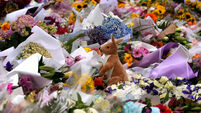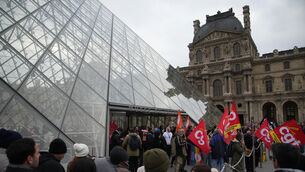Nepal in turmoil under new ruler people do not trust
The Nepalese capital was still under curfew and in turmoil tonight - with hundreds of tourist trapped in a kingdom that does not trust its new ruler.
Police moved to avert more riots against new King Gyanendra, warning Nepalese, infuriated by a lack of explanation of a royal massacre, that anybody going out could be shot.
An investigation into the shooting spree that killed 10 Nepalese royals, including its king and queen, failed to start as members of the panel quarrelled over how to proceed a delay that could heighten tensions.
About two dozen people, their heads shaven in a traditional Hindu show of respect for the dead, were arrested as they marched toward the royal palace carrying flags and demanding answers about the nation’s tragedy.
Although there was no rioting, the new curfew, cleared the streets. It came just six hours after an earlier curfew was lifted.
A group of people in a Katmandu suburb came outside and taunted police, who fired tear gas to disperse them, a witness said. There were no reported injuries.
Nepalese who ventured into the streets for their six hours of freedom were full of criticism for Gyanendra, who took the throne on Monday after a blood bath, allegedly carried out by Crown Prince Dipendra, wiped out the royal family.
The new 53-year-old monarch opposed Nepal’s beloved King Birendra’s move in 1990 to change from autocracy to a multi-arty democracy.
His son, and now crown prince, Paras, is even more unpopular. He was injured in the palace shooting and has a wild reputation.
Many say Gyanendra lost credibility by blaming the incident on ‘‘accidental’’ automatic weapon fire.
‘‘There is no king,’’ said artist Pradeep Chrikar, one of many who are declining to accept Gyanendra as the rightful monarch. ‘‘There is no one on the throne. This is unbelievable, a kingdom without a king.’’
During Monday’s unrest, two people were killed, apparently by police gunfire and at least 19 were injured.
Tensions flared today when dozens of people lining up to sign a condolence book at the royal palace were turned back.
‘‘We can’t even grieve and mourn any more,’’ said shopkeeper KP Rauniar. ‘‘We have been restricted. This is terrible.’’
When radio warned people of the second curfew, Nepalese began scurrying through the capital’s narrow streets to get home safely. It was unclear whether anger would keep building, or whether the curfews could calm those who remain unwilling to accept their new monarch, a head of state who wields influence but little power.
Gyanendra went on national television promising a public explanation of the royal slaughter, but will have a tough time convincing citizens.
‘‘A king is like a father,’’ said Madhav Prasad Pujasaini, a shopkeeper. ‘‘We don’t know who this king is. Nobody believes him.’’
Officials have said privately that Crown Prince Dipendra was the gunman angered when his mother refused his choice of a bride and that after he sprayed the royal family with gunfire he shot himself.
But Dipendra did not immediately die. He became a monarch on life support who died early Monday, clearing the way for Gyanendra to become king.
An investigative committee headed by Supreme Court Chief Justice Keshav Prasad Upadhaya and including House Speaker Taranath Ranabhat and opposition leader Madhav Kumar Nepal was supposed to start a three day probe of the killings.
But the investigation failed to get going as scheduled because opposition leader Nepal refused to take part. He believed Gyanendra had not followed constitutional procedures when he did not seek Cabinet consent for the probe.
‘‘We have some reservations,’’ said communist MP Pradeep Nepal. ‘‘There are certain procedures in a parliamentary democracy. These procedures have not been followed.’’
The chief justice met at his home with the MPs and constitutional experts to try to find a solution, Pradeep Nepal said.













